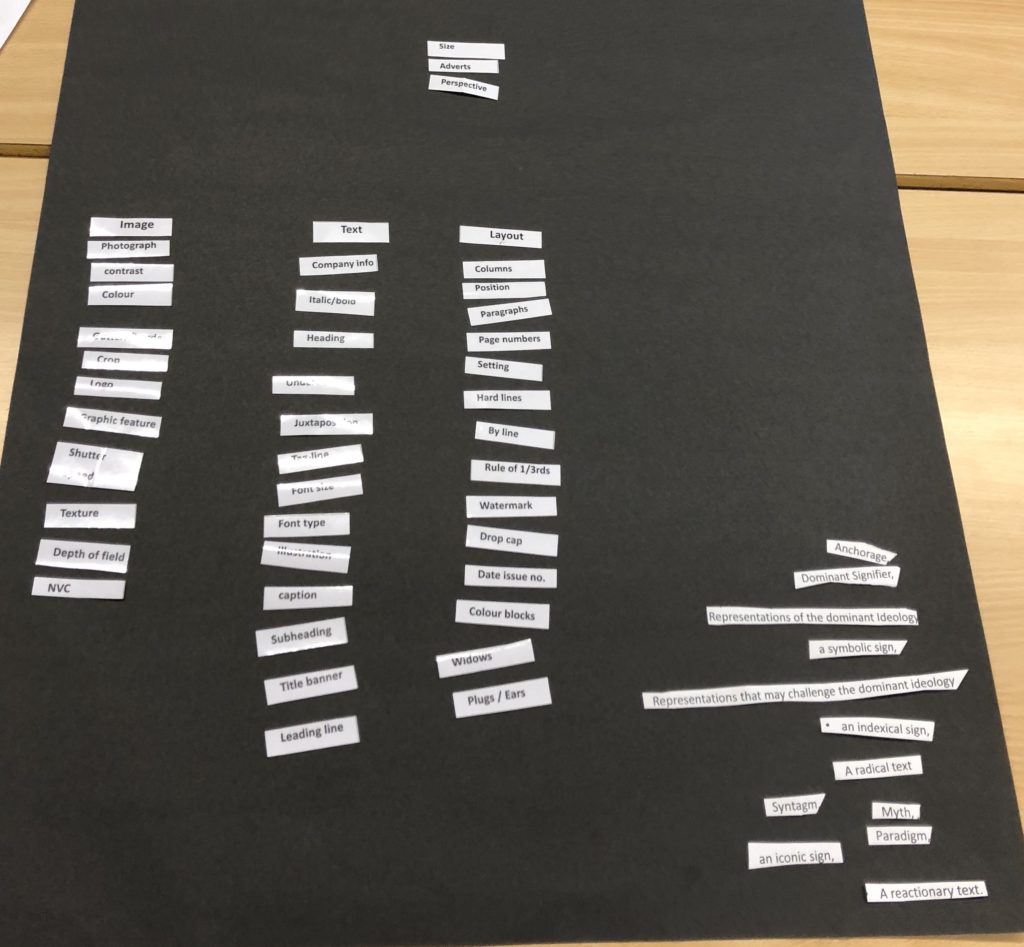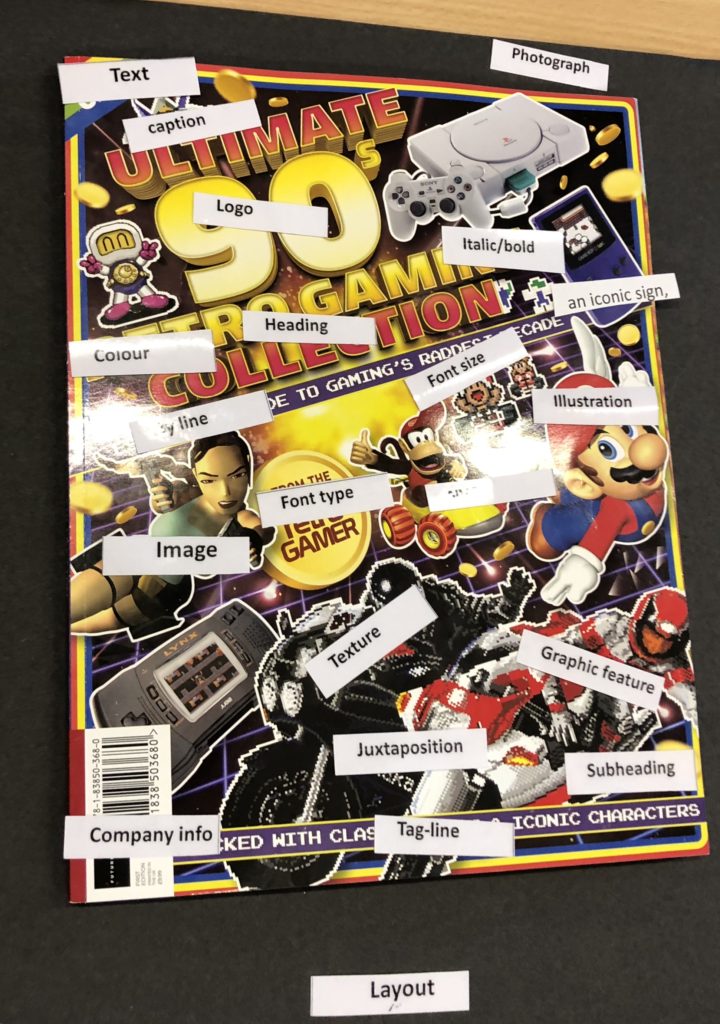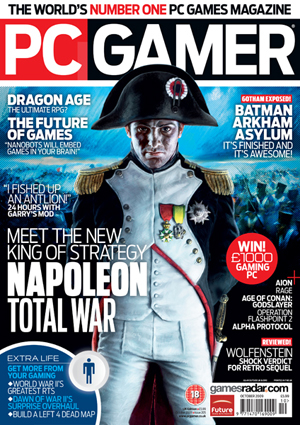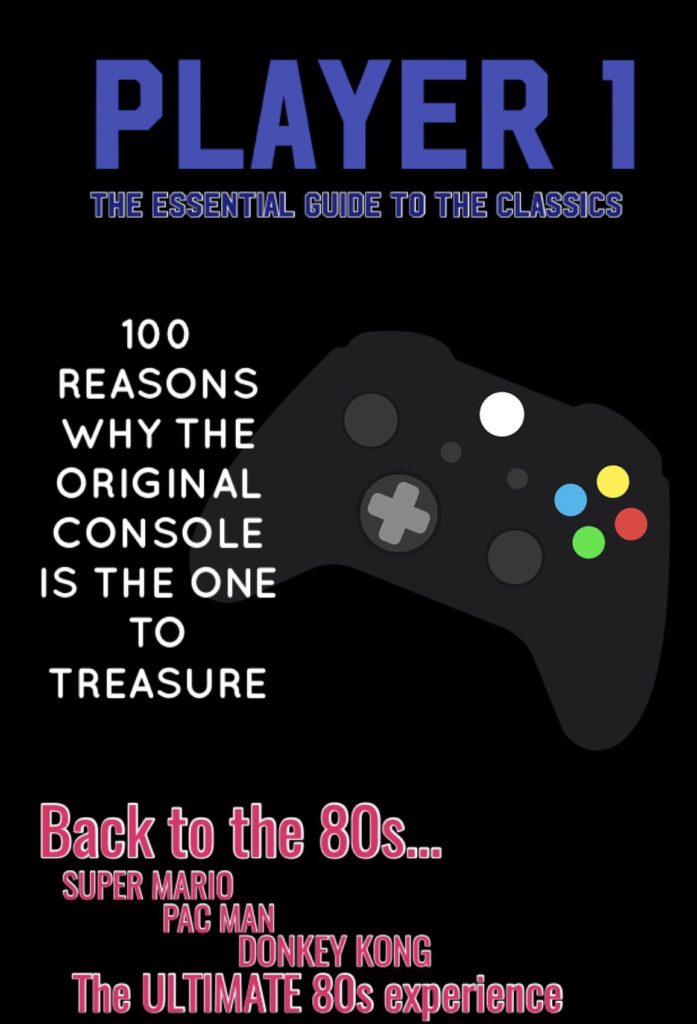I have chosen to call my gaming magazine ‘Player 1’. I got the inspiration from the magazine ‘Retro Gamer,’ and chose to follow a similar layout. I have designed my masthead in a bold font and included a shadow on the text to emphasize its importance on the cover. The byline reads ‘THE ULTIMATE GUIDE TO THE CLASSICS.’ Again, I got the idea for this byline from the magazine “Retro Gamer” which reads something similar.
The dominant signifier on my cover is the main image, which is an original game console. This connotes the idea that my magazine cover (and inside pages) have a theme of nostalgia. I also added fire to the background of the main image sparking out of the console, to draw the readership’s attention to the main image and to signify its importance.
The text around the dominant signifier reads “100 REASONS WHY THE ORIGINAL CONSOLE IS THE ONE TO TREASURE.” This again adds to the nostalgic sense. Focusing on the target audience, I have made it clear that the cover is aimed at those who experienced 80s gaming as my text reads “Back to the 80s.” This signifies that predominant readership will be adults in their 30s/40s.
I have incorporated a puff into my cover, in order to persuade my target audience to obtain an interest on what features there are inside.
As a whole, I chose not to bombard my magazine cover with too many codes and conventions in order to gain my receivers full attention. As the predominant target audience are adults, I decided not to fill the cover with bright images and symbols. Therefore, I focused on more copy and one principal image (along with the fire background) that links to the whole retro concept of the magazine.
















